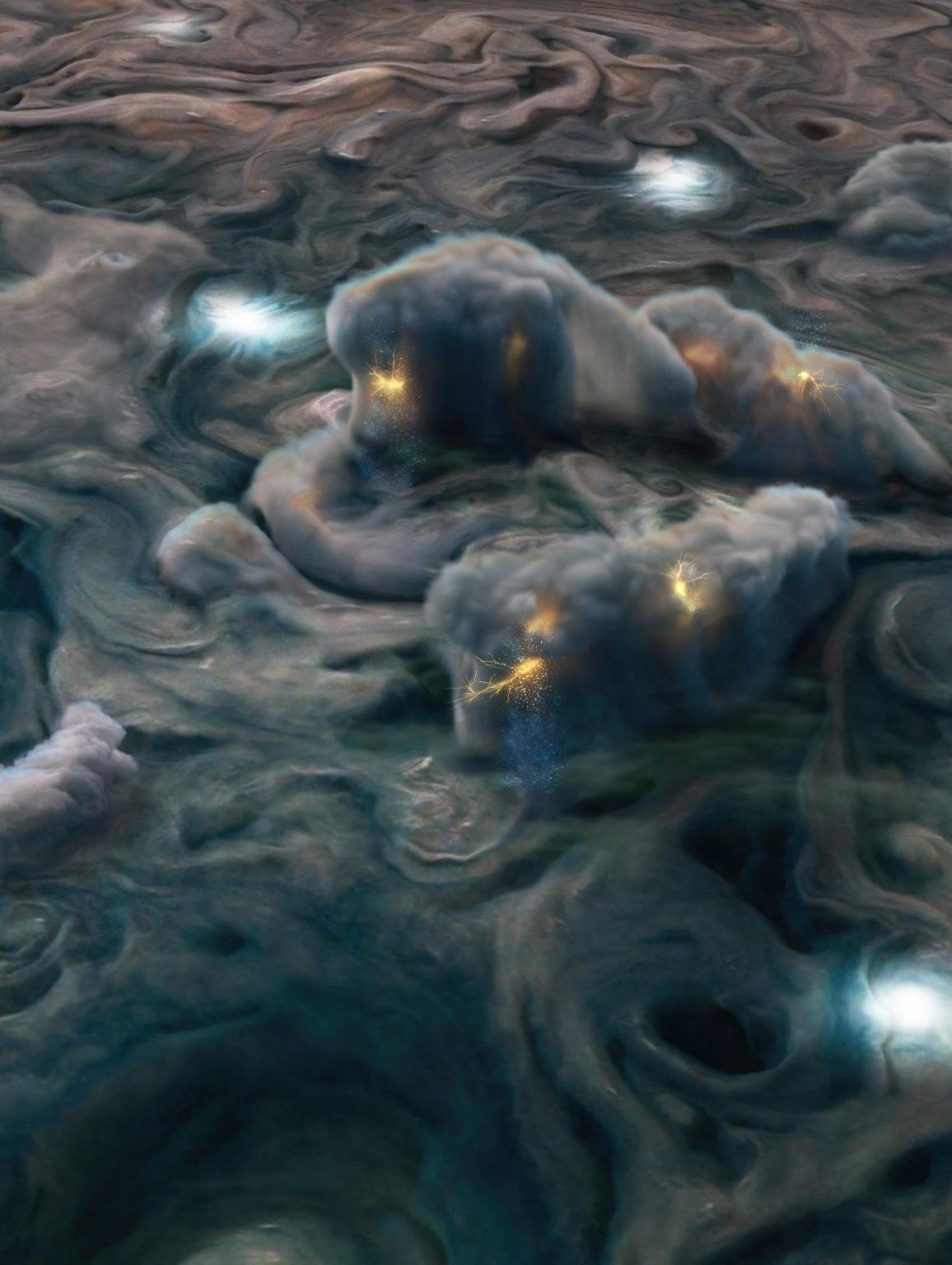The image above this text introduces the thunderstorm far away from the Earth. Those creepy-looking creatures are the results of a thunderstorm in the Jupiter atmosphere. When flashes of lightning are flashing they rise the temperature in clouds. And then that thing forms those creepy-looking creatures. Some people might see man or walrus in those clouds that are far away from Earth.
Could there be some kind of lifeforms in Jupiter's atmosphere?
But there is no evidence of that kind of creature's existence. Those "living balls" are hypothetical creatures that are made to model what kind of lifeforms can exist in certain types of atmospheres and chemical environments. The surface temperature of the planet Venus is so high that eucaryotic bacteria will be destroyed immediately.
The possibility is that on the dark side of Venus and high mountain areas of that planet are organisms that can use the high temperature of the atmosphere of that planet as an energy source. In the same way, the first organisms on Earth used inorganic minerals as a nutrient. They turned the minerals into the form that more advanced bacteria can benefit it.
https://www.universetoday.com/15134/is-there-life-on-jupiter/
Image: NASA/JPL





No comments:
Post a Comment
Note: Only a member of this blog may post a comment.